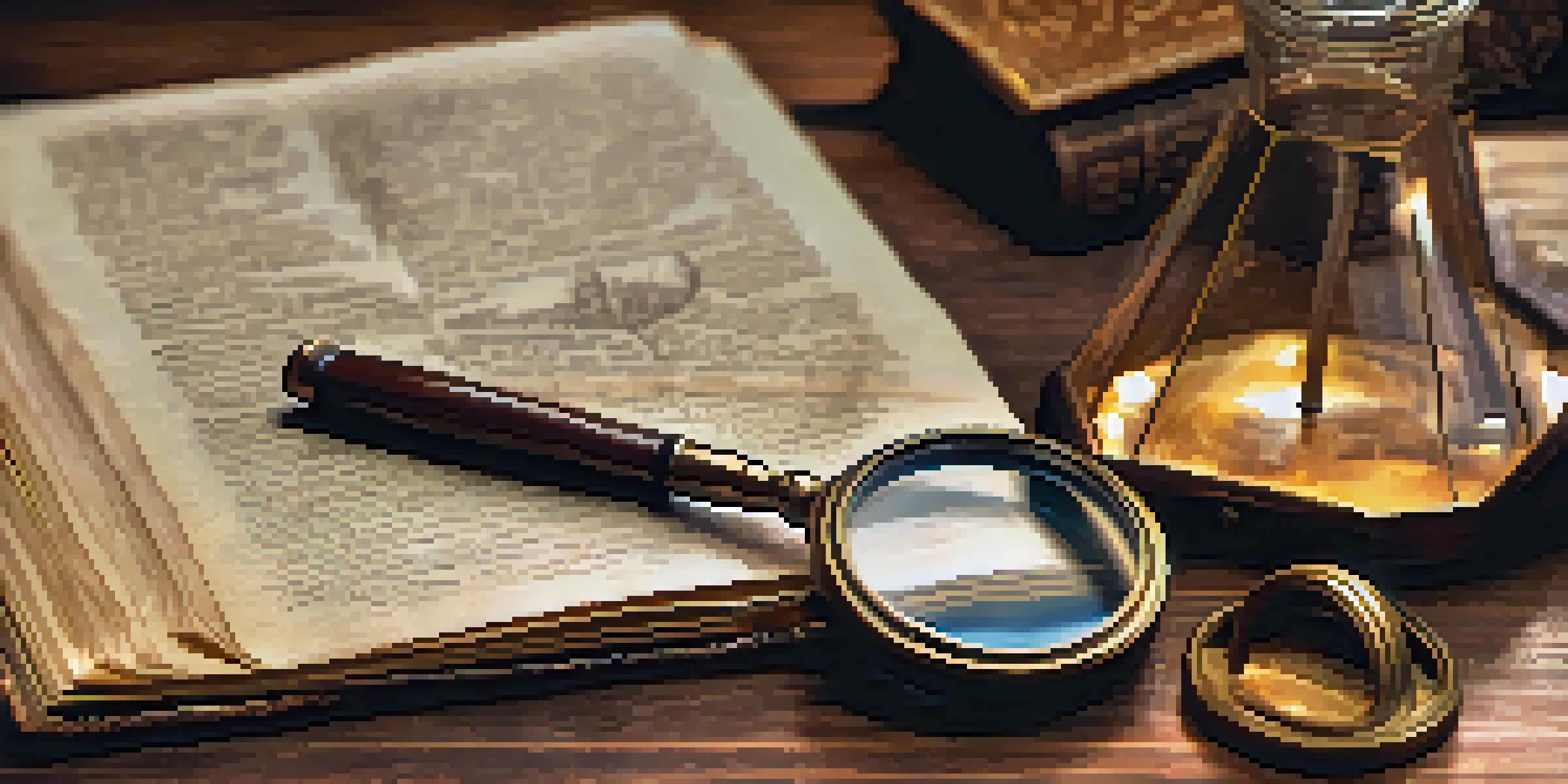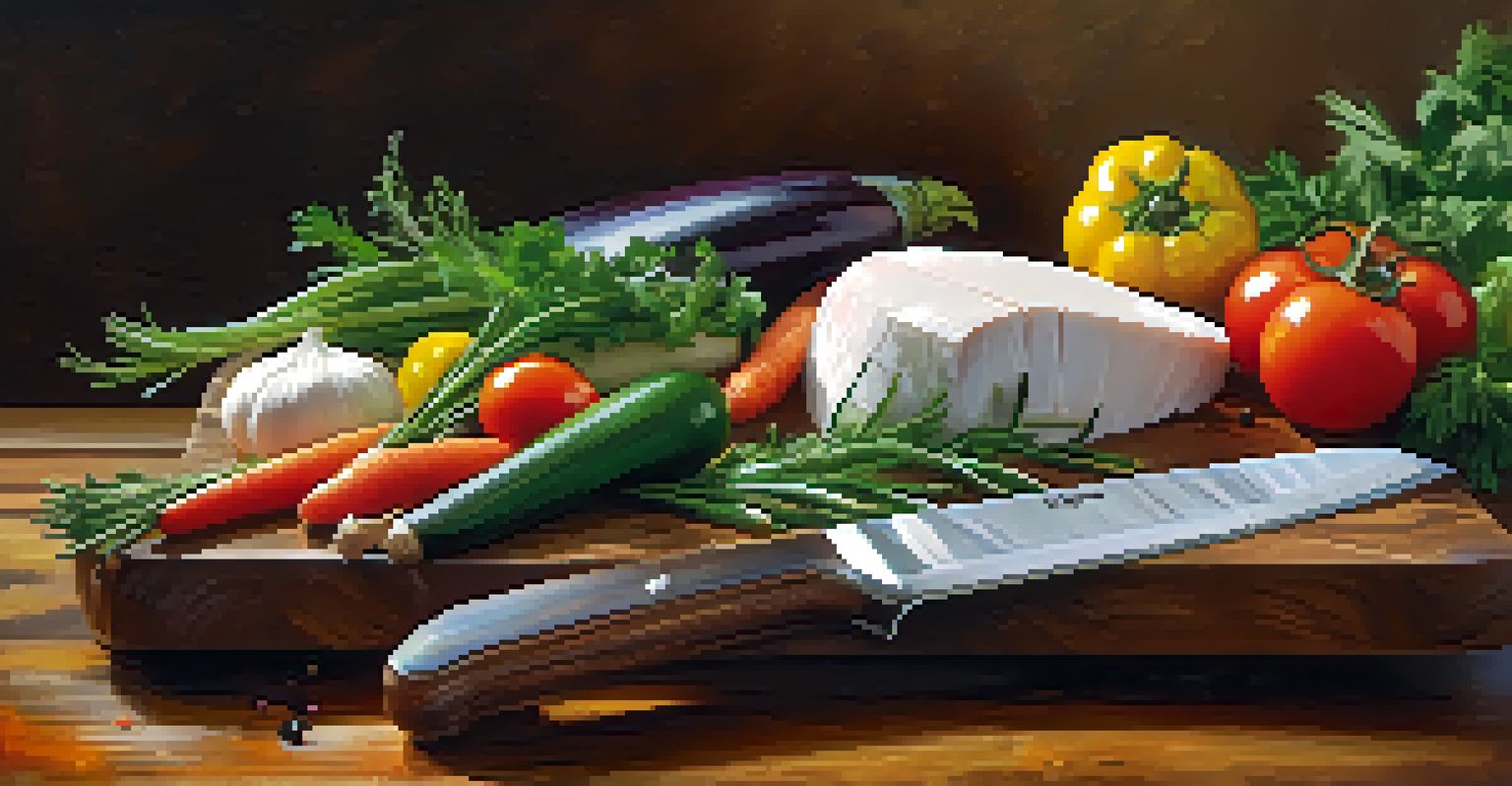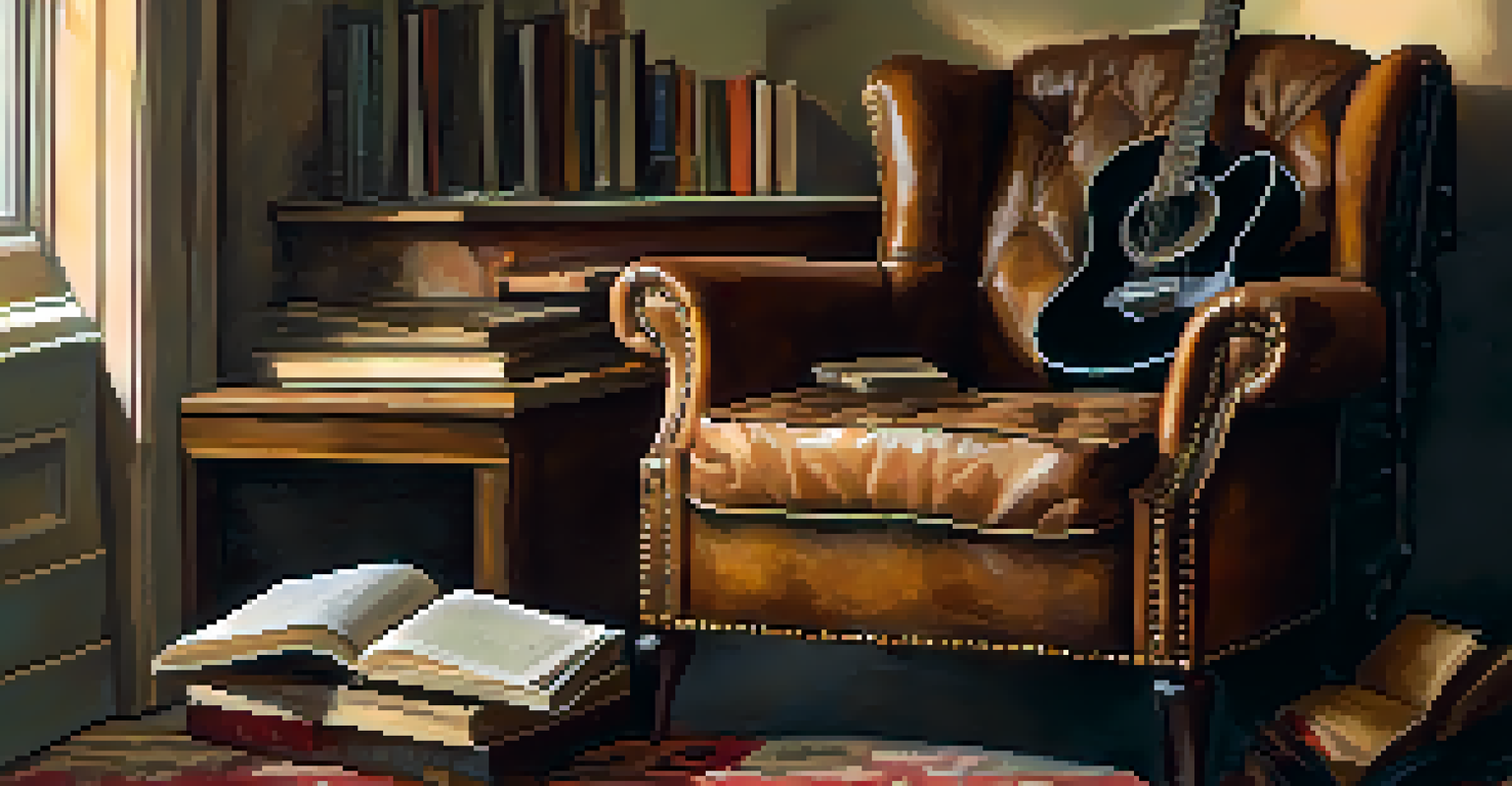The Role of Props in Character Development: A Deep Dive

What Are Props and Their Importance in Storytelling?
Props are objects used by characters to enhance storytelling. They can range from simple items like a book to complex gadgets that define a character's role. These objects aren’t just random; they are intentional tools that help convey the character’s personality and background.
Objects are not just things; they are the stories we tell ourselves about ourselves.
For example, a detective might carry a magnifying glass, signaling their analytical nature. This small detail provides insight into who they are without needing extensive dialogue. Props essentially act as visual shorthand, quickly communicating traits to the audience.
In essence, props enrich the narrative by adding layers of meaning. They can evoke emotions, hint at backstories, or even foreshadow events, making them crucial elements in character development.
Props as Extensions of Character Identity
Props often serve as extensions of a character's identity, reflecting their interests and lifestyles. For instance, a musician’s guitar can symbolize passion and dedication, while a chef’s knife may represent skill and creativity. These items become part of who the character is, making them more relatable to the audience.

This connection between characters and their props helps to establish a deeper emotional bond with viewers. When we see a character using their prized possession, we understand their values and motivations. It’s almost as if the props are telling a story of their own.
Props Enhance Character Identity
Props serve as extensions of a character's identity, reflecting their interests and emotional states.
As the narrative progresses, these props can evolve, mirroring the character's journey. A guitar that was once a source of joy might become a reminder of loss, showcasing how props can encapsulate the character’s development.
Symbolism: The Hidden Meanings Behind Props
Props often carry symbolic meanings that add depth to character development. A broken watch, for instance, might represent a character’s struggle with time or missed opportunities. By incorporating symbolism, storytellers can convey complex ideas without overwhelming the audience with exposition.
Every object tells a story; it's up to us to listen.
Consider how a character’s choice of clothing, such as a worn-out jacket versus a tailored suit, can symbolize their social status or internal conflict. These subtle cues allow the audience to infer a lot about a character's background and current state of mind.
Thus, props become powerful storytelling devices that enhance the narrative. They allow for a richer exploration of themes and character arcs, making the overall experience more engaging for the audience.
The Role of Props in Developing Relationships
Props can also play a pivotal role in illustrating relationships between characters. Shared items, like a family heirloom or a favorite book, can signify connection and intimacy. These objects often serve as touchstones for characters, evoking shared memories and emotions.
For example, in a romantic story, a couple’s gift exchange can highlight their feelings and the growth of their relationship. The significance of these props can deepen the audience's understanding of the dynamics at play, making the characters' interactions more poignant.
Symbolism Adds Depth to Stories
Props often carry symbolic meanings, enriching the narrative and providing insight into characters' journeys.
Ultimately, props provide visual cues that enhance the narrative of relationships. They help to establish bonds and conflicts, enriching the storytelling experience and allowing viewers to engage with the characters on a deeper level.
How Props Influence Character Actions and Decisions
The presence of props can significantly influence a character's actions and decisions throughout a story. For instance, a character might hesitate to use a weapon, showcasing their reluctance to resort to violence. This hesitation can reveal their moral compass and internal struggles.
Similarly, a character who carries a lucky charm may find themselves taking risks they normally wouldn’t. The prop acts as a catalyst for their actions, highlighting how external objects can impact internal choices. This interplay creates a more dynamic and engaging narrative.
By analyzing how characters interact with props, audiences can gain insight into their motivations and conflicts. It creates a deeper understanding of their journey, making the storytelling experience more immersive.
Props as Tools for Character Growth and Change
As narratives unfold, props can symbolize a character’s growth or transformation. A character who starts with a simple backpack might evolve into someone who carries a briefcase, indicating their professional development. These changes can reflect broader themes of aspiration and self-discovery.
Moreover, the way characters treat their props can signal shifts in their development. A character throwing away a memento could signify letting go of the past, while someone carefully preserving an item might indicate clinging to memories. Such actions provide visual cues about their emotional states.
Props Illustrate Relationships
Shared props can signify connections and intimacy between characters, enhancing the emotional depth of their interactions.
Therefore, props become integral to illustrating character arcs. They serve as tangible representations of change, enriching the storytelling by showcasing the evolution of characters in a relatable way.
Case Studies: Iconic Props in Film and Literature
Numerous films and literary works illustrate the significant role of props in character development. Take Harry Potter’s wand, for instance; it’s not just a tool for magic but a representation of his identity and growth throughout the series. It symbolizes his connection to the wizarding world and his journey from an outsider to a hero.
Similarly, in 'The Great Gatsby,' the green light represents Gatsby’s dreams and aspirations. This prop holds profound symbolism that drives his character and ultimately highlights his tragic quest for acceptance and love. Such examples underscore how props can be woven into the very fabric of a character's story.

By examining these iconic props, we see how they enhance character depth and resonate with audiences. They become memorable symbols that contribute to the overall impact of the narrative.
Conclusion: The Lasting Impact of Props on Character Development
In conclusion, props play a multifaceted role in character development, enhancing storytelling in profound ways. They serve as extensions of identity, carry symbolic meanings, and illustrate relationships and growth. By effectively utilizing props, storytellers can craft richer narratives that resonate with audiences.
As we engage with characters, we begin to understand that their props are more than mere objects; they are vital elements that help us connect emotionally. These elements can evoke empathy, reflection, and even inspiration, making the storytelling experience memorable.
Ultimately, props are powerful tools that enrich narratives, allowing characters to come alive in our minds. By recognizing their significance, we can appreciate the artistry behind character development and the storytelling craft.